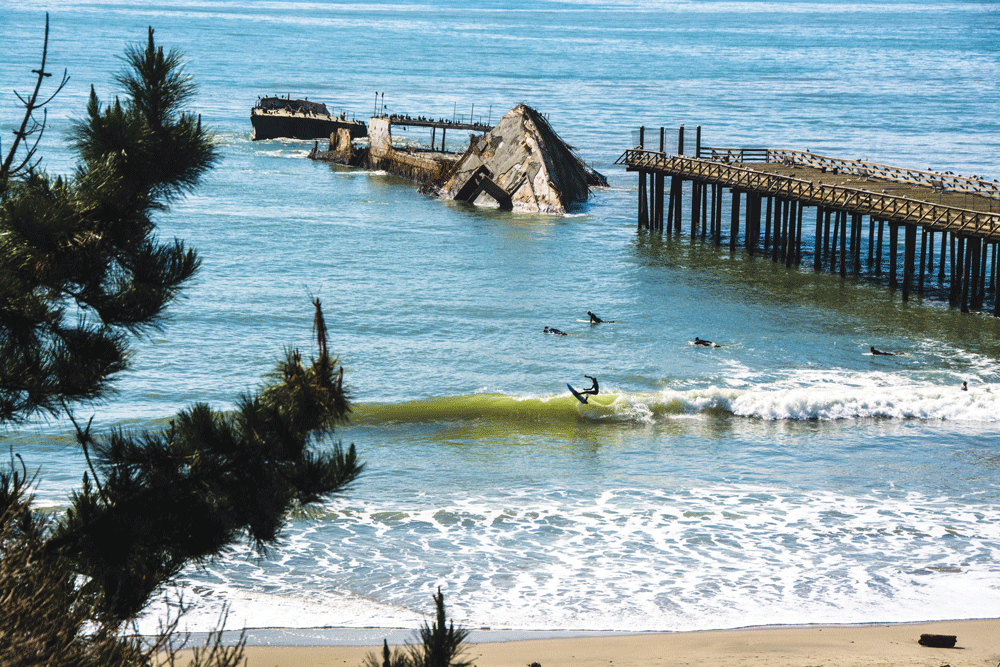EDITOR’S NOTE

I tend to think that every city believes their restaurant scene has terrible service, so I was skeptical at first when Lily Stoicheff pitched a story a couple of months ago about why “Service in Santa Cruz sucks” has become such a common refrain among local diners.
But what she had heard about the story behind the story—rumblings of bigger trouble in the service industry that might be affecting local restaurants severely—was interesting enough that we agreed she should look into it.
Over weeks of research, it became more and more clear that the problem is far bigger than we first realized, and that it ties into some of the biggest and most divisive problems facing Santa Cruz County. The resulting story this week about why Santa Cruz restaurants are facing a massive labor shortage should open a lot of eyes to an unexplored consequence of what is unfortunately an all-too-familiar problem in Santa Cruz, and one which many of our stories end up pointing back to: a lack of affordable housing in Santa Cruz for sectors that were once able to provide their workers with a living wage.
To me, this story is an example of one of the most important things a community newspaper can do: take something that locals are saying, like “Service in Santa Cruz sucks,” and start from the simple act of saying “OK, but why?” to build an investigation that ultimately gives readers a clearer picture of what’s happening and how it affects them. I hope this story does the same for you.
STEVE PALOPOLI | EDITOR-IN-CHIEF
LETTERS TO THE EDITOR
Read the latest letters to the editor here.
Drive It Home
Re: “Living on the Edge” (GT, 8/23): I’m glad to see your two articles in the most recent Good Times on probably the most pressing problem humanity has ever faced. Given current rattling-sabers over use of nuclear weapons, that is saying something, and it is something that needs to be driven home over and over. I heard Gary Griggs, UCSC Professor from your cover article say publicly that 1) Climate Change is real; 2) it’s us (emissions); 3) it’s Serious; and 4) it’s urgent. We need to get that into everyday consciousness of the ordinary citizen. I’m looking forward to reading Grigg’s new book on sea level rise, a local issue that will affect housing, infrastructure, health, safety and the economy for all. I’m looking forward to our local, state and federal government officials continuing to grapple with best policy to give us what we really need: a healthy climate restored to zero degrees warming. We must “keep fossil fuels in the ground,” and get their unseen emissions out of our overstuffed (with carbon molecules) atmosphere.
Diane Warren
Boulder Creek
Planning for a Crisis
Re: “Living on the Edge”: Congratulations to our local oceanic superhero Gary Griggs on his new book Coasts in Crisis.
My biggest takeaway from last week’s Good Times interview was that “serious impacts” of long-term sea level rise will begin to have effects within just “several more decades” (i.e., 30 years). Gary explains that, “higher sea levels will move up the San Lorenzo River Channel and raise the water table beneath downtown.”
I don’t know about you, but I plan to be alive within the next 30 years.
I motion that the City of Santa Cruz zone two new downtown districts that are outside of the San Lorenzo River Channel: “Westside” and “Seabright.”
The sooner we begin to reorient our infrastructure, the more disaster-proof our community becomes. When the levee breaks, as it surely will, Santa Cruz will long since have grown beyond.
Traffic and neighborhood character are valid concerns, but our zoning code can account for these issues. We can keep cars off the roads by reducing per-unit parking requirements, making it more expensive to park a car, but cheaper to build a unit of housing.
We can preserve and enhance community character by requiring that all new buildings be covered with at least 50 percent of either art, plants, or energy production, giving additional height allowances with reasonable setbacks to account for the extra cost of construction.
Santa Cruz has always been forward-thinking. Our civic planning should reflect that.
We will know our success by a monument to Gary Giggs in one of the new downtown districts carrying the inscription: “We were lucky enough to have him. We were wise enough to listen to him. We will love him forever, Professor Gary Griggs.”
Manu Koenig | Civinomics
ONLINE COMMENTS
Re: Cap and Trade
Two bad “cost” choices to reduce emissions. Even though the extension of cap and trade with AB398, which places the emissions crusade through the free market auctions, is projected to be more cost-effective than SB32 command and control to meet emission goals of 40 percent below 1990 levels by 2030, through CARB’s regulatory authority, the public will be seeing increases in their costs for energy and products for the foreseeable future.
— Ronald Stein
CORRECTION
Due to a transcription error, last week’s story “Measures for Measure,” incorrectly listed the last name of Rowan Vickers, who plays the Duke, upon second reference. We regret the error.
PHOTO CONTEST WINNER

Submit to ph****@go*******.sc. Include information (location, etc.) and your name. Photos may be cropped. Preferably, photos should be 4 inches by 4 inches and minimum 250dpi.
GOOD IDEA
LEAVES BEHIND
The city of Capitola now finally has a city flower, the begonia. Capitola Mayor Stephanie Harlan honored the flower just in time for the 65th annual—and last ever—Begonia Festival, which has delighted people for decades. The final festival runs four days, starting Friday, Sept. 1. The main event, a parade of begonia-coated vessels floating down Soquel Creek, is 1 p.m. on Sunday. For more information, visit begoniafestival.com.
GOOD WORK
LAG CORRECTION
County educational groups have won a $300,000 grant to address disparities in computer learning. The two-year National Science Foundation grant— awarded to Santa Cruz City Schools and local groups—bolsters directives in Santa Cruz public schools for computer science, a burgeoning field where women, African American and Hispanic students are greatly underrepresented. Research shows that gap begins early, possibly before high school.
QUOTE OF THE WEEK
“I went into a restaurant. The menu said ‘breakfast at any time.’ So I ordered French toast during the Renaissance.”
-Steven Wright














